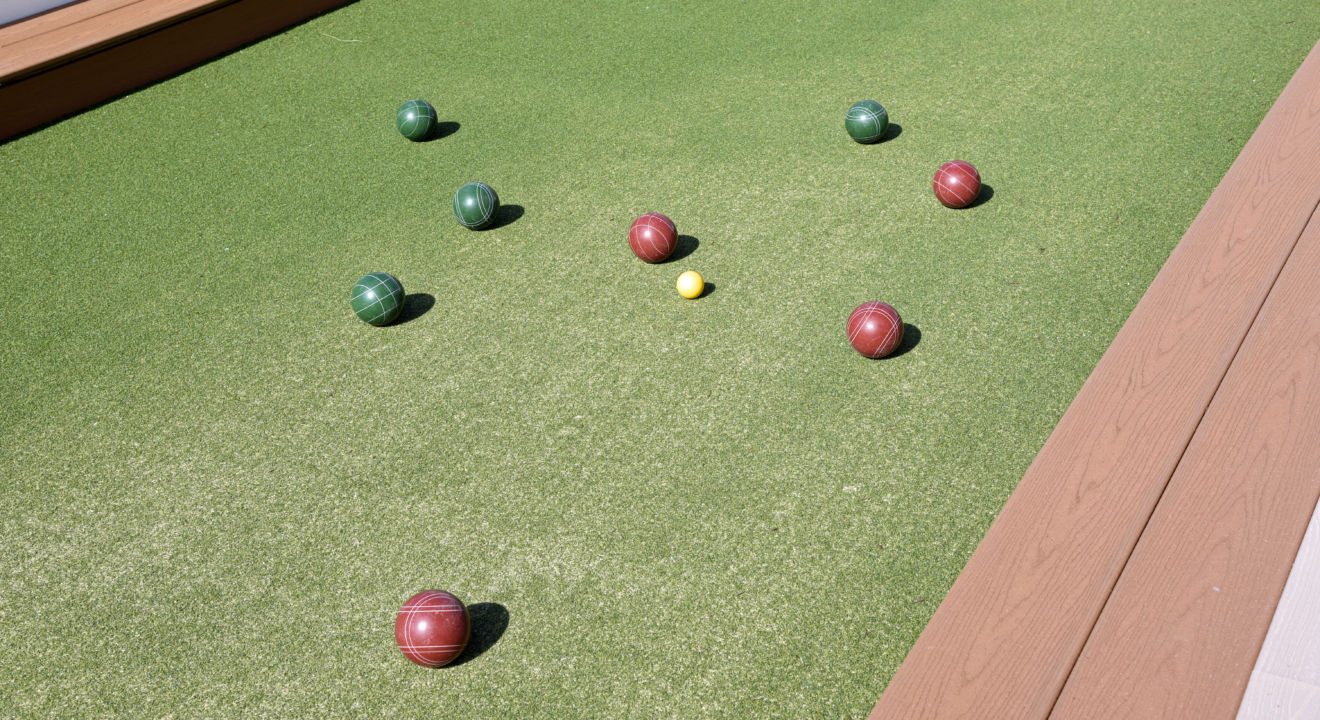Culture August 8, 2016


For men and women who may not know exactly what bocce ball is: imagine outdoor bowling but without pins.
Bocce ball is one of many games in the collection of boules games (which are games in which you throw or roll heavy balls toward a target ball). Its ancestry can be traced back thousands of years to the Roman Empire. In those times, it’s likely that the balls were made of stone. As the game gained popularity through other parts of Europe, the name bocce, from the Italian word ‘bowls,’ was adopted for the game.
Now, the game has many names worldwide. Since diverse variations of bocce ball currently exist, here is one to play this fun and interesting game.
Whether you’re on a grassy field or a sandy beach, you can still play Bocce ball without a regulation-size court. A regulation bocce ball court is 76 feet long and 12 feet wide, but you don’t need that much space to be able to play casually. All you need is a set of bocce balls, at least two people and a relatively flat, long space.
The game requires eight two-pound bocce balls – four in one color and four in another (usually green and red) and a pallino or jack (usually white or yellow). The pallino, the target ball, is smaller than a bocce ball and weighs significantly less. The object of the game is to roll your bocce balls as close to the pallino as you can and get points by being closer than your opponent.
To play, you need two teams, either with one, two or four people on each team. Each team starts by picking a color, then each team flips a coin to decide who throws the pallino. The winning team throws the pallino to choose its location – not too far, but definitely not too close. If the pallino is thrown and it’s judged by others to be unsatisfactory, the person can re-throw it. All balls are thrown underhand.
Next, the person who threw the pallino throws the first bocce ball (let’s call that Team A). Team B then throws its first bocce ball, and if it’s closer to the pallino than Team A’s first ball, then it’s Team A’s turn to throw another ball. However, if Team A’s first ball is still closer than Team B’s first ball, then Team B rolls again (a different person on the team).
Essentially, whichever team is further from the pallino keeps rolling until it gets closer than the other team’s closest ball (or they’ve used up their balls.) The other team then throws their remaining balls to finish that round. The pallino and opposing team’s balls can also be moved or knocked away by other balls during play.
The team that has the closest ball(s) to the pallino after all balls have been thrown receives one point per ball. For example, if Team B ended with two balls closer to the pallino than Team A’s closest ball, the score for that round would be, Team B: 2, Team A: 0. The pallino is then thrown again (by the team who won the last round) and a new round begins. The game has as many rounds as it takes for a team to get to a predetermined set of points (typically anywhere from seven to 21).
For those of you who haven’t played before, hopefully, you want to learn now! It’s a casual, competitive game that you’ll find yourself wanting to play over and over again.